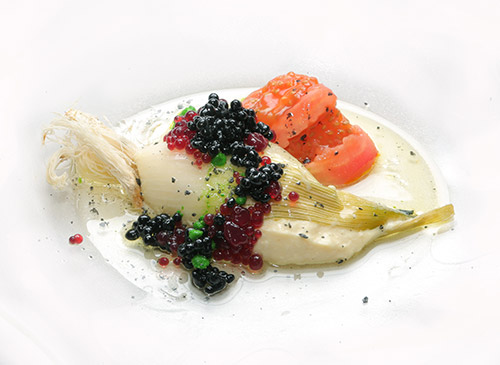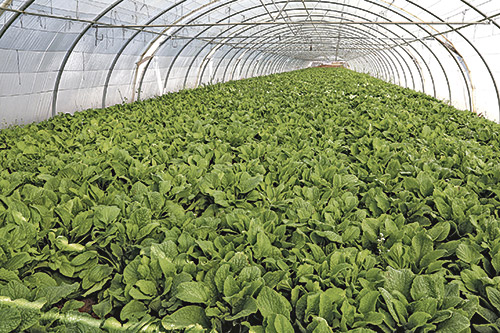Zaragoza and the orchard
Vegetables of recognized value and prestige are grown on the banks of the Ebro, the Gallego River, Huerva and the Imperial Canal of Zaragoza: tomato, onion, thistle and artichoke, lettuce heart, escarole, etc. It is a route full of flavor of the vegetables of Zaragoza and its surroundings.

Zaragoza is located in the center of the Ebro valley, in one of the areas of Spain with the highest fruit and vegetable production, but, in addition, two other rivers flow into the Aragonese capital: Gállego and Huerva, irrigating a rich land, although conditioned due to an extreme climate, which provides fresh food to the city's markets and catering establishments, many of which have made horticultural products their flag.
With its logistics center located in the heart of Mercazaragoza —Mercados Centrales de Abastamiento de Zaragoza S.A.—, which annually markets around one hundred thousand tons of fruit and vegetables, the Zaragoza orchard stands out for its quantity, but, above all, it does For its quality. Singular, almost unique products, such as borage, tomato from Zaragoza, Fuentes de Ebro onion with PDO, artichoke or thistle are the stars of the best public tables in Zaragoza, both in traditional preparations and in new interpretations that have made humble vegetables into authentic culinary gems.
This agro-system, which until recently crossed the metropolitan area and which today appears at the gates of the city, is as old as the first human settlements, but it was widely developed by the Arabs. To find the most beautiful legacy of the Saraqusta Taifa, we begin our route at the Aljafería Palace, from the 11th century, located very close to the riverbank. A visit to the current headquarters of the Cortes del Gobierno de Aragón allows you to discover, in its surroundings, some restaurants in the area, where you can taste, for example, the authentic Aragonese fritada, a dish made exclusively with local vegetables.

Opposite, but on the opposite bank of the Ebro, stretches the most futuristic Zaragoza, with modern buildings that were part of Expo 2008, dedicated, of course, to the liquid element. The Bridge Pavilion, the Torre del Agua or the Palacio de Congresos, with the sculpture “El Alma del Ebro”, have already become symbols of the city. In the Expo zone and in the annex water park or “Luis Buñuel” establishments have also emerged that take advantage of the unique setting to offer a kitchen well assembled with the environment. Two other buildings that cut out the skyline of Zaragoza in the 21st century, and which are also the venue for an intense cultural programme, are the IAACC Pablo Serrano, very near the historic Pignatelli building and the Auditorium-Palacio de Congresos, in the Romareda area, where the second Michelin star awarded to the morning capital is located.
From the Expo, it is worth exploring the banks of the Ebro, downstream, and visiting the restaurants and kiosks that dot both banks, from the Almozara neighborhood to the Arrabal and from there to the rural neighborhood of Santa Isabel, where we will also find places highly recommended to taste zero kilometer vegetables. From there, we go up the river Gállego, to get closer to the Cartuja de Aula Dei, a monastery founded in the 16th century that houses some valuable paintings by Francisco de Goya.
We are in one of the areas with the highest horticultural production, where the undisputed queen is borage.
Almost practically unknown in the rest of the peninsula, borage is, along with the ternasco de Aragón, the hallmark of Aragonese cuisine. Until a few years ago, this fine and delicate vegetable was eaten almost exclusively boiled, with potatoes and sprinkled with olive oil, however, now, thanks to the creativity of Aragonese chefs, it boasts great versatility.
But the Aragonese orchard does not only live on borage, the variety of products in all seasons is so wide that there are many restaurants that dedicate monothematic days to the Zaragoza orchard: artichoke, thistle, cabbage and spinach, lettuce, escarole, pepper, courgette , onion, garlic, tomato —from Zaragoza and Barbastro—, beans, aubergines... the catalog is endless and to get to know it, nothing better than strolling through any of the municipal markets or going to the Agroecological Market that is installed every Saturday in the Plaza del Pilar, adding to the numerous tourist attractions that we find there: the two cathedrals —the one from Pilar and the one from Salvador—, la Lonja, the Diocesan Museum or the Real Maestranza de Caballería, among others.
More information
